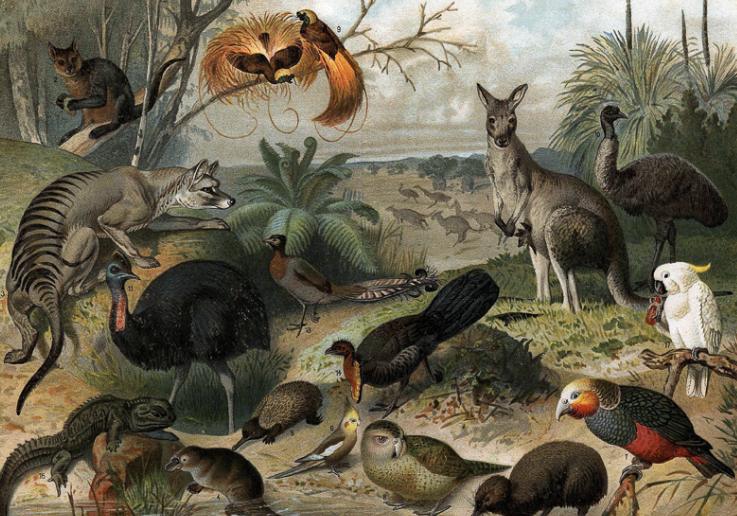Flora and Fauna are fundamentally intertwined with the well-being of our planet and human civilization. Biodiversity, driven by these diverse life forms, sustains the delicate balance of our ecosystems, providing countless benefits. They contribute to ecological stability, offspring crucial services like oxygen production, carbon dioxide removal, and pest control. Moreover, flora and fauna are reservoirs of resources that support our survival, encompassing food, medicine, and materials. They also enrich our lives culturally and aesthetically, serving as muses for art, literature, and spiritual beliefs.
What are Flora and Fauna?
Flora and Fauna refer to the plant and animal life, respectively, in a specific region, habitat, or ecosystem. Flora play a vital role in maintaining ecological and providing essential ecosystem services, including oxygen production, carbon sequestration, and habitat for various wildlife species. These terms are often used in the context of ecology and environmental studies to describe the diversity and ecosystem components of a given area.
Flora
Flora refers to the collective plant life in a particular region or habitat. It includes all the plant species, both native and introduced, that are found in a very specific area. Flora can vary greatly depending on factors such as climate, soil type, and geographic location. Scientists and botanists often study the flora of different regions to understand the diversity of plant life and its ecological significance. India has around 18,000 species of flowering plants, making it one of the world’s most botanically diverse countries.

- Diversity: Flora can vary significantly from one place to another. Tropical rainforests, for example, have incredibly diverse flora with thousands of plant species, while deserts may have relatively few plant species adapted to arid conditions.
- Native and Non-Native: Flora can be classified into native and non-native (or introduced) species. Native flora are naturally occurring plants in an area, while non-native flora have been brought to an area by human activities, intentionally or unintentionally.
- Economic Importance: Many plants in the flora have economic significance. They provide resources like food, medicine, timber, and fiber. Agriculture heavily relies on specific types of flora.
- Conservation: Conservation efforts often focus on protecting native flora, especially in the face of habitat loss and invasive non-native species that can threaten native ecosystems.
- Botanical Gardens: Botanical gardens are places where a wide variety of plant species from around the world are cultivated and displayed for research, education, and enjoyment.
Fauna
Fauna refers to the collection of animal life or species in a particular region or time period. It encompasses the animals, both vertebrates and invertebrates, that inhabit a specific ecosystem or geographic area. Fauna is one of the two main components of a region’s biodiversity, with flora representing the plant life. Here we have discussed some additional information about fauna. India is home to diverse wildlife, including approximately 89,000 species of animals. Some well-known species include Bengal tigers, Asian elephants, Indian rhinoceroses, and various species of deer.

- Diversity: Fauna can vary greatly in terms of species diversity, ranging from regions with a wide variety of animal species to those with a more limited range of species.
- Habitats: Different types of fauna are adapted to various habitats, such as deserts, forests, oceans, grasslands, and freshwater ecosystems. Each habitat supports a unique set of animal species.
- Ecological Roles: Fauna play essential roles in ecosystems. They may be predators, prey, pollinators, decomposers, or serve other ecological functions that help maintain the balance of nature.
- Conservation: Many species of fauna are threatened or endangered due to factors like habitat loss, pollution, and climate change. Conservation efforts aim to protect and preserve these species to maintain biodiversity.
- Human Interaction: Human activities can have a significant impact on fauna, both positive and negative. People rely on animals for food, clothing, and companionship, but they can also be responsible for habitat destruction and overexploitation.
Difference Between Flora and Fauna
As we all know both flora and fauna are two distinct components of the natural world. Here we have discussed a few differences that highlight the contrasting characteristics and roles of flora (plants) and fauna (animals) in the natural world, each essential to the balance and functioning of ecosystems.
(a) Definition and Composition
- Flora: Refers to all plant life in a particular region or ecosystem. This includes trees, shrubs, flowers, grasses, and other plant species.
- Fauna: Encompasses all the animal life in a specific area, such as mammals, birds, reptiles, insects, fish, and other organisms.
(b) Mobility
- Flora: Generally, plants are immobile, rooted in one place, and obtain nutrients through Photosynthesis.
- Fauna: Animals are typically mobile, capable of independent movement, and must consume other organisms (plants or other animals) for energy.
(c) Reproduction
- Flora: Plants often reproduce through processes like pollination, seed formation, and Asexual Reproduction (e.g., vegetative propagation).
- Fauna: Animals reproduce sexually, involving the union of male and female gametes, and most species have distinct sexes.
(d) Respiration
- Flora: Plants respire by taking in carbon dioxide and releasing oxygen through tiny openings called Stomata.
- Fauna: Animals respire by inhaling oxygen and exhaling carbon dioxide through specialized respiratory organs (e.g., lungs or gills).
(e) Sensory Perception
- Flora: Plants lack sensory organs and a nervous system, so they cannot perceive their environment or respond to it in the same way animals do.
- Fauna: Animals possess sensory organs like eyes, ears, and nerves allowing them to sense and react to their surroundings.
For some more differences, you can also check our article on the Difference Between Flora and Fauna.
Importance of Flora and Fauna
Flora and Fauna, the plants and animals that make up Earth’s ecosystem, are of immense importance for several reasons. Protecting and conserving flora and fauna is essential for the health of our plants and the well-being of future generations.
- Biodiversity: They contribute to the plant’s biodiversity, which is crucial for ecosystem stability and resilience. A diverse range of species helps ecosystems adapt to changes and thrive.
- Ecosystem Services: Flora and Fauna provide numerous ecosystem services, including Pollination, nutrient cycling, and water purification, which benefit both nature and human society.
- Food and Medicine: Many of our food and medicine resources come from plants and animals. They are essential for human survival and well-being.
- Economic Value: Biodiversity supports industries such as agriculture, fisheries, and tourism, providing livelihoods, and economic value.
- Scientific Knowledge: Studying flora and fauna advances scientific understanding and can lead to innovations in various fields, from medicine to engineering.
- Cultural and Aesthetic Value: They hold cultural significance for many communities and contribute to the aesthetic beauty of the world.
- Climate Regulation: Plants absorb carbon dioxide and release oxygen, playing a role in regulating the Earth’s climate.
- Genetic Resources: Flora and Fauna provide a vast genetic pool that can be trapped for breeding and biotechnology.
- Ecological Balance: They help maintain balance in ecosystems by controlling pests and serving as prey for other species.



 50 Vegetables Name for Kids in English a...
50 Vegetables Name for Kids in English a...
 Food Chain: Definition, Types, Examples,...
Food Chain: Definition, Types, Examples,...
 Human Respiratory System: Definition, Di...
Human Respiratory System: Definition, Di...













